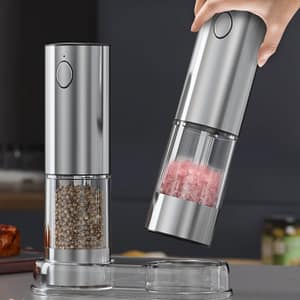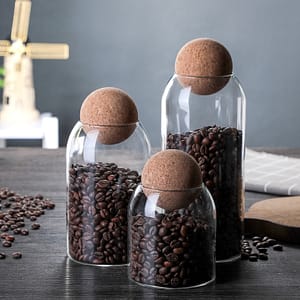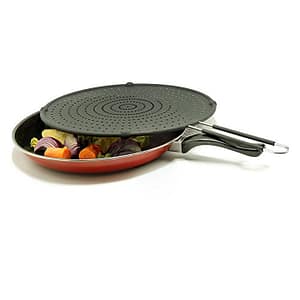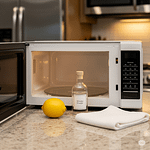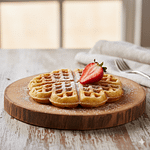
Blog Details

Why Your Pasta Sticks: The One Trick You Miss
Is there anything more frustrating than a beautiful pot of pasta transforming into a clumpy, starchy mess?
You carefully choose your favorite pasta shape, wait for the water to boil, and then, despite your best efforts, it sticks together like glue. It’s a common kitchen woe that has plagued home cooks for generations.
While many believe the secret lies in adding oil to the water (spoiler: it doesn’t work!) or rinsing the cooked pasta (definitely don’t do that!), the truth is far simpler and often overlooked.
It’s not a secret ingredient or a fancy technique, but rather one fundamental principle that changes everything. Ready to unlock the secret to perfectly al dente, gloriously separated pasta every single time?
The Myth of Oil and The Truth of Water
Let’s debunk some common misconceptions first:
- Adding Oil to Boiling Water: Many people drizzle olive oil into the pasta water, believing it prevents sticking. The reality? Oil and water don’t mix. The oil simply floats on the surface, doing nothing to the pasta submerged below. It might make your pasta sauce struggle to cling to the noodles later!
- Rinsing Cooked Pasta: Rinsing pasta under cold water after cooking removes the starchy film that helps sauces adhere to the noodles, leaving you with bland, uninviting pasta. Only rinse if you’re making a cold pasta salad.
So, if these don’t work, what’s the real game-changer?
The One Trick: Generous Water, Vigorous Boil
The single, most crucial factor in preventing sticky pasta is using a sufficient amount of water and maintaining a rolling boil throughout the cooking process.
Think about it: pasta releases starch as it cooks. If there’s not enough water, or if the water isn’t actively boiling, that starch gets concentrated and forms a sticky film around the noodles, causing them to clump together.
Here’s how to master it:
Use a Large Pot: This is non-negotiable. For a standard pound (500g) of pasta, you need at least 4-6 quarts (4-6 liters) of water. Don’t crowd the pot! A spacious Kitchen Whizdom Stainless Steel Stock Pot is ideal for this task, ensuring your pasta has plenty of room to swim.
Bring Water to a ROLLING Boil: Don’t add your pasta until the water is bubbling furiously and continuously. This ensures the water temperature won’t drop too much when you add the pasta, and it provides the necessary agitation to keep the noodles separate.
Salt Liberally: Once the water is boiling, add a generous amount of salt. We’re talking at least 1-2 tablespoons (15-30g) for a large pot. This isn’t just for flavor (though it’s crucial for that!); salt raises the boiling point of water slightly and helps to firm up the pasta’s surface, further preventing stickiness. The water should taste like the ocean!
Add Pasta and Stir Immediately: As soon as you add the pasta, give it a good stir with a Silicone Spoon or Pasta Fork. This initial agitation prevents the pasta from sticking to itself and the bottom of the pot during the critical first minute of cooking when starch is most actively released. Stir again periodically throughout cooking.
Maintain the Boil: Keep the heat high enough to maintain that vigorous, rolling boil. If the boil subsides, the starch can settle, leading to sticking.
Cook to Al Dente: Always follow the package directions for cooking time, but start checking a minute or two before the suggested time. Al dente pasta is firm to the bite but not hard. Overcooked pasta is mushy and more prone to sticking.

Beyond the Boil: Quick Tips for Success
- Don’t Break Long Pasta: While tempting, breaking spaghetti or linguine forces you to use less water relative to the pasta volume in the initial stages. Let it soften and submerge naturally.
- Drain Properly: Use a large colander, ideally a Kitchen Whizdom Fine Mesh Colander, to drain your pasta quickly. Don’t let it sit in the hot water for too long.
- Sauce Immediately: For best results, add your cooked pasta directly to your warm sauce (or add sauce to the pasta pot) and toss immediately. The residual heat will finish the cooking process and help the sauce coat the noodles beautifully. If you’re not saucing immediately, add a tiny splash of the starchy pasta water or a very small amount of olive oil and toss to prevent sticking.
By simply focusing on using enough water and maintaining a powerful boil, you’ll transform your pasta-making game. Say goodbye to sticky clumps and hello to perfectly textured, delicious pasta every time!
FAQ: Preventing Sticky Pasta
Why do some recipes recommend adding oil to pasta water?
This is a common misconception that has been passed down. The idea is that oil prevents sticking, but as explained, oil floats and doesn’t mix with water, so it has no effect on the pasta itself. It might make your sauce less effective at clinging to the noodles.
How much salt should I really add to pasta water?
A good rule of thumb is 1-2 tablespoons of salt per gallon (4 liters) of water. The water should taste noticeably salty, like the ocean. Most of this salt goes down the drain, but it’s crucial for seasoning the pasta from the inside out and helping prevent stickiness.
Can I reuse pasta water?
While theoretically possible, it’s not recommended for preventing stickiness. The starch content in reused water increases dramatically, making it more likely for the next batch of pasta to clump. Always start with fresh, generously salted water.
What if I don’t have a large enough pot?
If you genuinely don’t have a large enough pot, it’s better to cook pasta in smaller batches. Overcrowding the pot is a primary cause of sticky pasta, as it lowers the water temperature too much and doesn’t allow enough room for the pasta to move freely. Consider investing in a larger stock pot for future pasta perfection!
Our Products
-
Unique Book Coffee Cup – Stack of Books Design
₹1,681.00 – ₹1,695.00Price range: ₹1,681.00 through ₹1,695.00 Select options This product has multiple variants. The options may be chosen on the product page -
Salt & Pepper Electric Grinder – Rechargeable
₹2,435.00 Select options This product has multiple variants. The options may be chosen on the product page -
Glass Storage Jar – Cork Lid & Minimalist Design
₹2,563.00 Select options This product has multiple variants. The options may be chosen on the product page -
Food grade Silicone Splash Screen – Mess-Free Cooking
₹2,158.00 Select options This product has multiple variants. The options may be chosen on the product page -
Stainless Steel Corn Cob Holders – Mess-Free
₹1,086.00 Select options This product has multiple variants. The options may be chosen on the product page -
Silicone Donut Mold – Makes 6 Non-Stick Donuts
₹833.00 Select options This product has multiple variants. The options may be chosen on the product page
Products
-
Unique Book Coffee Cup – Stack of Books Design
₹1,681.00 – ₹1,695.00Price range: ₹1,681.00 through ₹1,695.00 Select options This product has multiple variants. The options may be chosen on the product page -
Salt & Pepper Electric Grinder – Rechargeable
₹2,435.00 Select options This product has multiple variants. The options may be chosen on the product page -
Glass Storage Jar – Cork Lid & Minimalist Design
₹2,563.00 Select options This product has multiple variants. The options may be chosen on the product page -
Food grade Silicone Splash Screen – Mess-Free Cooking
₹2,158.00 Select options This product has multiple variants. The options may be chosen on the product page



